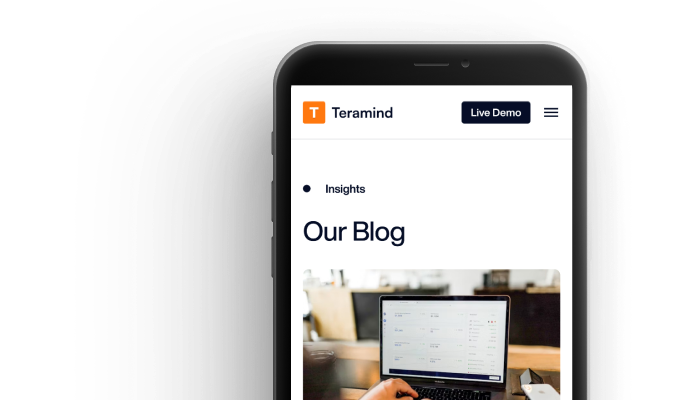The world can finally look forward. After more than a year of uncertainty with the end to the global pandemic in sight (knock on wood), people and businesses are finally able to find some normalcy again. But looking ahead while considering what was left behind has made one thing clear: normal isn’t what it was…especially for business who now must begin choosing between remote work and a hybrid office.
Stay-at-home orders in 2020 proved that much of the workforce can not only complete their work from home, they’re happier and more productive doing so. That leaves business owners with a tough decision to make moving forward: go all in for remote work or adopt the increasingly popular hybrid model that balances remote work with time in the office. In order to make the best decision for your company, here’s five questions to ask yourself when choosing between remote work and a hybrid office.
What works for current (& future) staff?
The individuals most affected by a fully remote or hybrid remote workflow are your employees. If employees are uncomfortable, they’ll be less productive and that’s true for workers that are at-home and those in the office. Overall, studies show that most of the time, remote workers are more productive and available than their in-office counterparts. That isn’t necessarily true for everyone, however. If a notable portion of your workforce has been struggling over the last year during the call to work from home, hybrid remote work may better suit your company needs. But current employees aren’t the only ones to consider.
Remote opportunities attract the best talent; and without being tied to a particular location fully remote companies enjoy a much larger, country-wide or even global, talent pool. Hybrid offices that require in-office hours, even if part time, don’t enjoy the same hiring benefits since employees must live a commutable distance from an office.
Where does company culture fit in?
You’ve heard time and time again how company culture impacts the success of a business. This is why it’s important to choose a workflow that remains consistent with your culture.
Fully remote and hybrid remote work each lend themselves to different aspects of company culture and different company values. For instance, teamwork is more easily reiterated in hybrid remote work environments where employees have an office to meet and collaborate. Companies which stress employee autonomy, self improvement and communication are better suited for a fully remote workforce since the flexibility of working remotely encourages the workforce to pursue those values. Since company culture can be easily adapted it may not be the determining factor in fully remote vs hybrid, but it is one to consider. In 2020, businesses got creative when it came to maintaining culture while working remotely. Virtual happy hours, executive AMAs and stressing informal communication allowed companies to seamlessly integrate their company values and culture into their remote workflows.
 Stay on top of employee productivity even when remote
Stay on top of employee productivity even when remote
How does it affect the bottom line?
Most important for business owners to consider is how it will affect their bottom line. Overall, a permanently remote office is easier on the budget than offering hybrid remote options. Hybrid offices require businesses to provide a centralized working space which adds to overhead costs. If lowering overhead costs is the main concern, a fully remote workforce is the answer. Even when providing employees with stipends for their remote workspace and use of their personal utilities like electricity and internet, the cost of going fully remote far undercuts the cost of a hybrid office. A hybrid office costs almost as much as being in-office full time. Even when only half the staff is in or office hours are staggered, a company must fully maintain the space all of the time.
Co-working office memberships or rental spaces might be a cost saving solution if you’re interested in hybrid work but don’t want to incur the cost of maintaining an office. These provide remote workers with meetup spaces and alternatives to their home office if they’re looking for a change, but there are limitations.
What processes require in-person interaction?
Some industries like SaaS are primed for fully remote offices. With products that can be delivered online, becoming fully remote would be an easy transition. For others, like a retail shop with a brick and mortar location, it’s practically impossible. Still, some business processes may require in-person meetings regardless of the company’s products. For instance, your sales team may deliver better results with in-person meetings. You might even consider yourself to be one of the eight out of ten executives who prefer face-to-face meetings to close deals. Evaluating company processes to determine what works best for different systems plays a major role in what the future of your workflow looks like.
Finding processes that require in-person connection doesn’t mean you have to commit to a remote hybrid office either. For the sales teams and executives that prefer face-to-face meetings, these meetings can still take place outside of a dedicated office space, allowing the company to reap the cost-saving benefits of a fully remote office while answering to the needs of individuals.
How agile is your business model?
The ability to quickly adapt to a changing market sets industry leaders apart from industry losers. Dynamic businesses that evolve to meet the ever-changing needs and wants of clients fare best, while the benefits of business agility extend beyond cornering the market. Agile business models that boast an equally agile workforce create environments that excel during times of change. Sadly, not all businesses do. Think back to the very beginning of the pandemic when stay-at-home orders were first instituted. Did your company and its staff rise to the occasion or was there a slow learning curve to overcome that plagued the business for months? If you find yourself leaning toward the latter, staying the current course–whether that’s fully remote or permanent remote–might be the answer for the time being.
Of course, that doesn’t mean your workflow should remain stagnant. If you’re looking to update to a different office model, first consider putting into place more fluid systems and processes that can prepare your business and team for making the final leap.
Deciding What’s Best For Your Business
Both permanent and hybrid remote work have their own advantages. While neither model will work across all businesses equally and successfully, taking into consideration your workforce, company systems and business goals will help determine which path will be best for your organization’s needs when choosing between remote work and a hybrid office. Regardless of the workflow model you choose, its success depends on an intentional, committed effort from you as a business owner. With that as an example to follow, your company and its workforce will make the transition with ease.
Optimize Your Business With Teramind
Optimizing your business starts by making data-driven decisions. Get timely and quick access to key data such as app and online activity, task and project engagement, work time analysis and more. Teramind is an enterprise grade employee monitoring solution with integrated business intelligence features that shows you the information that’s most relevant for your organization.
But don’t just take our word for it…








